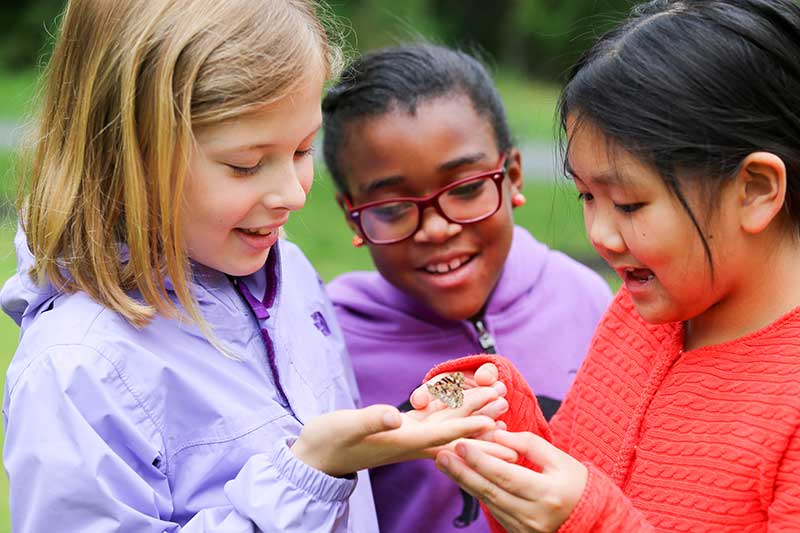In science class with Lower School and Fifth Grade Science Teacher Rebekka Schultz, third grade students have had the opportunity to investigate life cycles by focusing on the life cycle of the painted lady butterfly. For four weeks, the students watched tiny caterpillars grow, molt, form chrysalises, and then emerge as butterflies.
“During each stage of the butterfly’s life cycle, students carefully observed the structure and function of the insect’s body,” said Ms. Schultz. “They also observed the butterflies’ different behaviors, such as spinning silk for protection, and identified what butterflies need to survive. Each student kept a detailed journal that included written observations and sketches of the butterflies changing form.”
In the final stage of the butterfly’s life cycle, students spent several days observing the adult butterflies flutter their new wings and use their proboscis to drink sugar water. The third graders also identified the characteristics that all insects share.
“Through this observational study, students began to understand the role of butterflies in the environment as both pollinators and food for other animals,” said Ms. Schultz.
On the very last day, the young scientists celebrated the conclusion of their study by releasing the butterflies into the school’s community garden near Hartman Hall.

